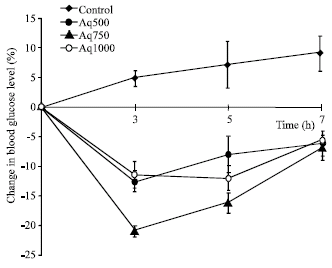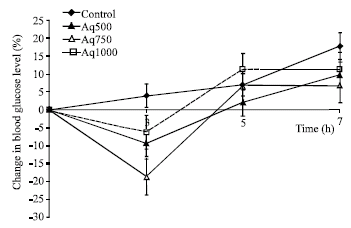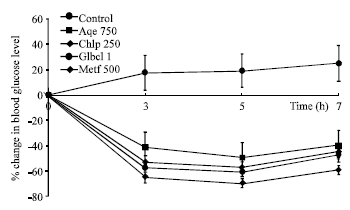Research Article
The Hypoglycaemic Activity of the Aqueous Extract of Stachytarpheta angustifolia (Verbanaceae) in Normoglycaemic and Alloxan-Induced Diabetic Rats
Department of Pharmaceutics and Pharmaceutical Microbiology,Faculty of Pharmaceutical Sciences, Ahmadu Bello University, Zaria, Nigeria
Y.K.E. Ibrahim
Department of Pharmaceutics and Pharmaceutical Microbiology,Faculty of Pharmaceutical Sciences, Ahmadu Bello University, Zaria, Nigeria
E.M. Abdulrahman
Department of Pharmacognosy and Drug Development, Faculty of Pharmaceutical Sciences, Ahmadu Bello University, Zaria, Nigeria
M.A. Ibrahim
Department of Pharmaceutics and Pharm. Technology, Faculty of Pharmaceutical Sciences, University of Jos, Nigeria











